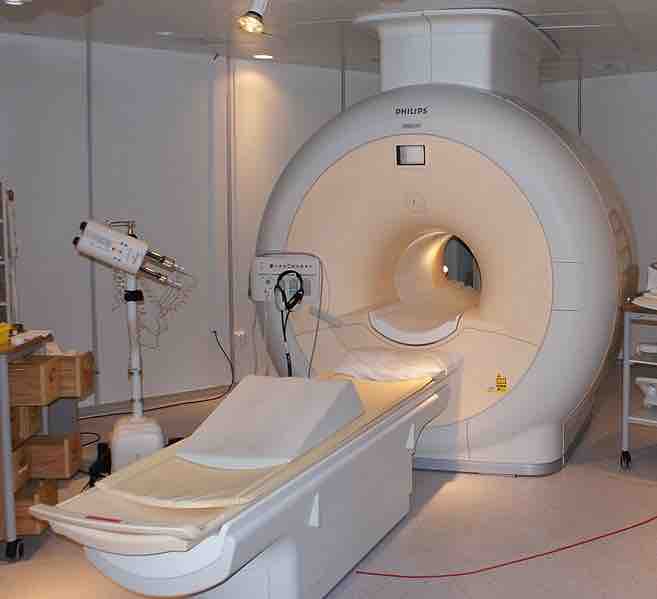Magnetic resonance imaging (MRI), also called nuclear magnetic resonance imaging (NMRI) or magnetic resonance tomography (MRT), is a medical imaging technique used in radiology to visualize internal structures of the body in detail. MRI utilized the property of nuclear magnetic resonance (NMR) to image the nuclei of atoms inside the body.
MRI machines (as pictured in ) make use of the fact that body tissue contains a large amount of water and therefore protons (1H nuclei), which get aligned in a large magnetic field. Each water molecule has two hydrogen nuclei or protons. When a person is inside the scanner's powerful magnetic field, the hydrogen protons in their body align with the direction of the field. A radio frequency current is briefly activated, producing a varying electromagnetic field. This electromagnetic field has just the right frequency (known as the resonance frequency) to become absorbed and then reverse the rotation of the hydrogen protons in the magnetic field.

MRI Scanner
Phillips MRI scanner in Gothenburg, Sweden.
After the electromagnetic field is turned off, the rotations of the hydrogen protons return to thermodynamic equilibrium, and then realign with the static magnetic field. During this relaxation, a radio frequency signal (electromagnetic radiation in the RF range) is generated; this signal can be measured with receiver coils. Hydrogen protons in different tissues return to their equilibrium state at different relaxation rates. Images are then constructed by performing a complex mathematical analysis of the signals emitted by the hydrogen protons.
MRI shows a marked contrast between the different soft tissues of the body, making it especially useful in imaging the brain, the muscles, the heart, and cancerous tissue—as compared with other medical imaging techniques such as computed tomography (CT) or X-rays. MRI contrast agents may be injected intravenously to enhance the appearance of blood vessels, tumors or inflammation.
Unlike CT, MRI does not use ionizing radiation and is generally a very safe procedure. The strong magnetic fields and radio pulses can, however, affect metal implants (including cochlear implants and cardiac pacemakers).